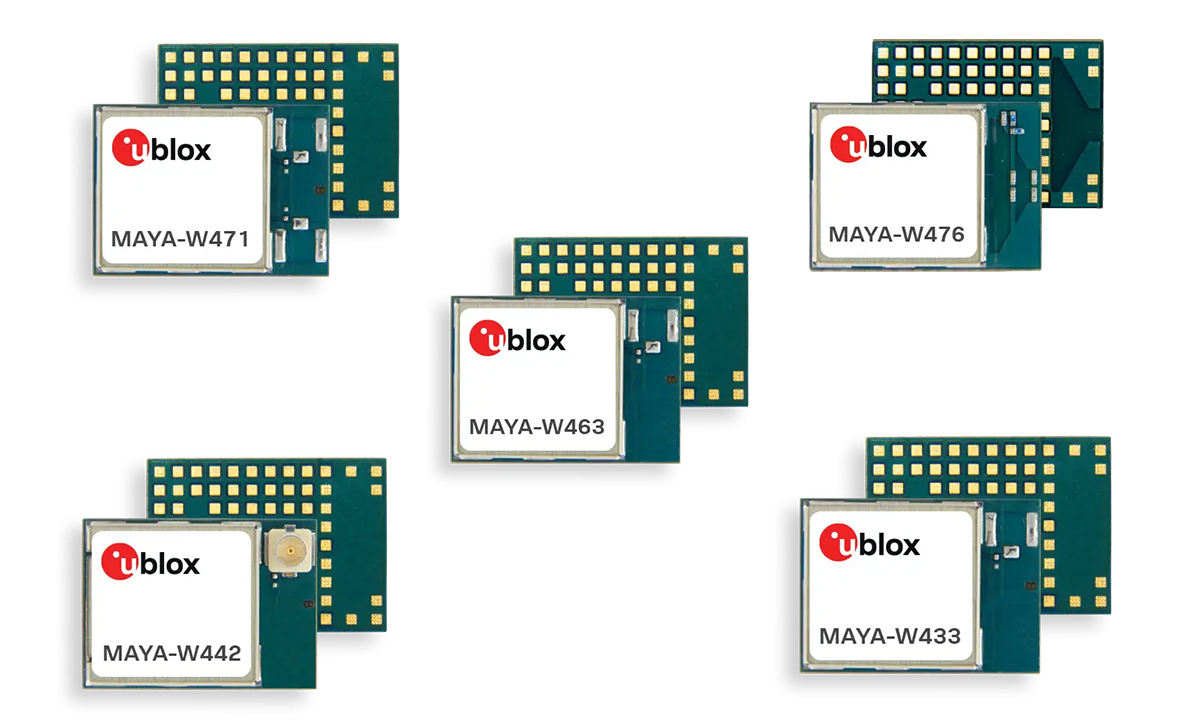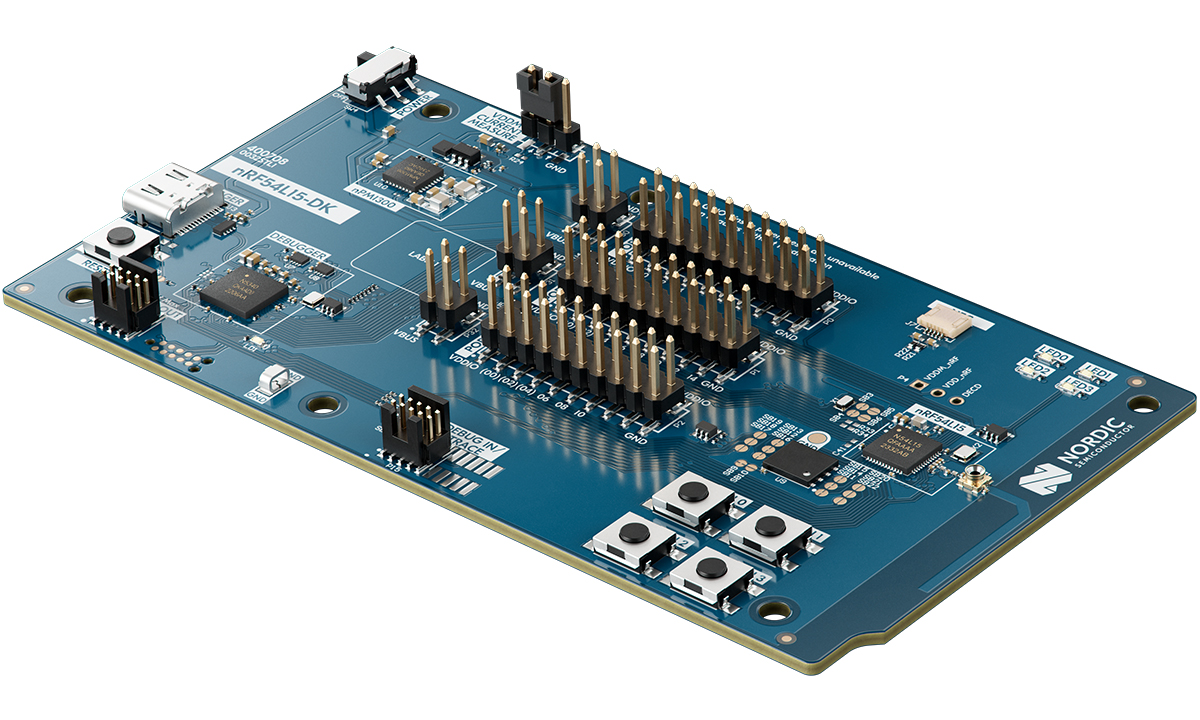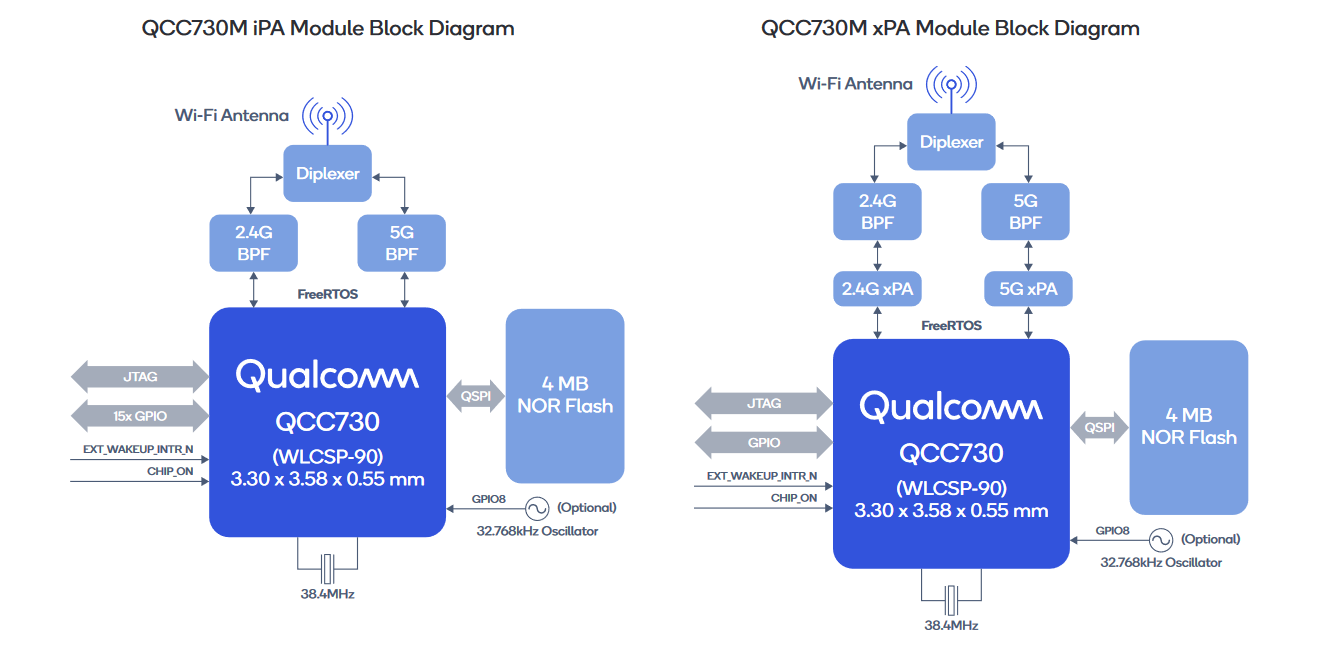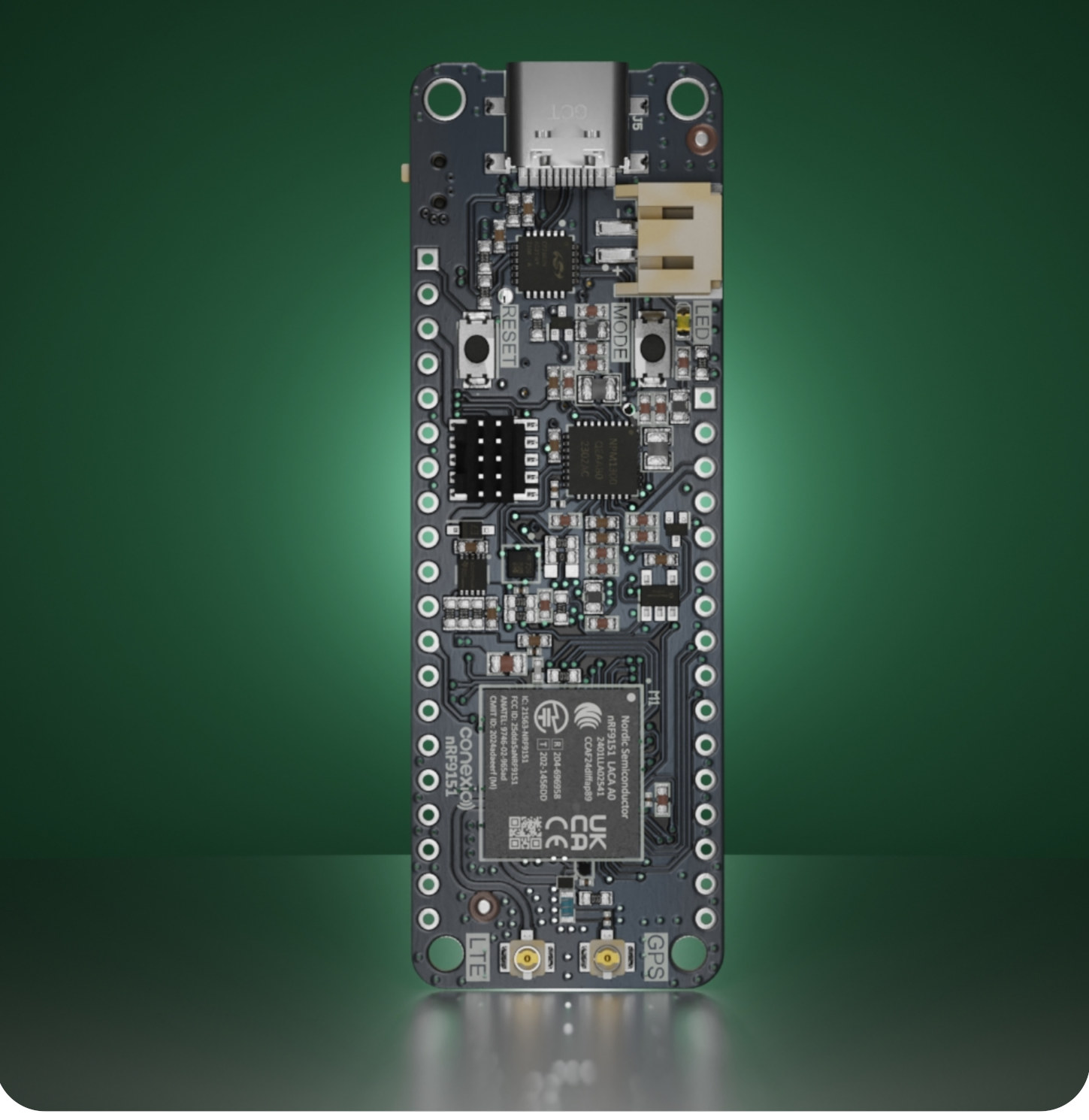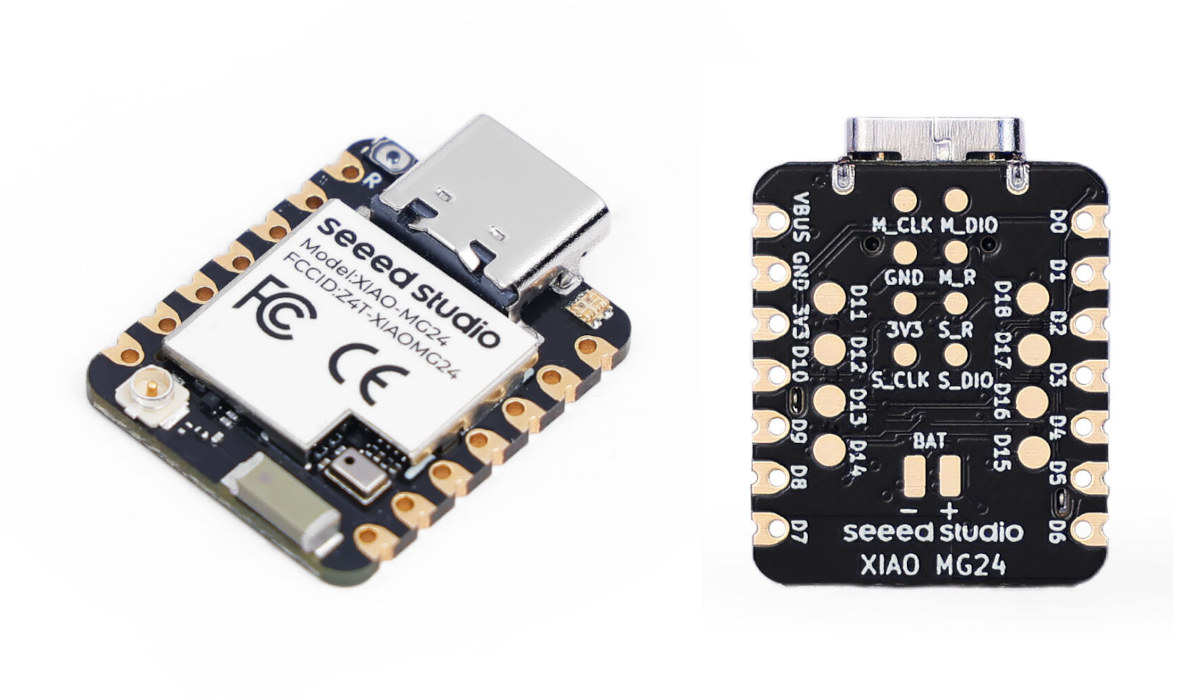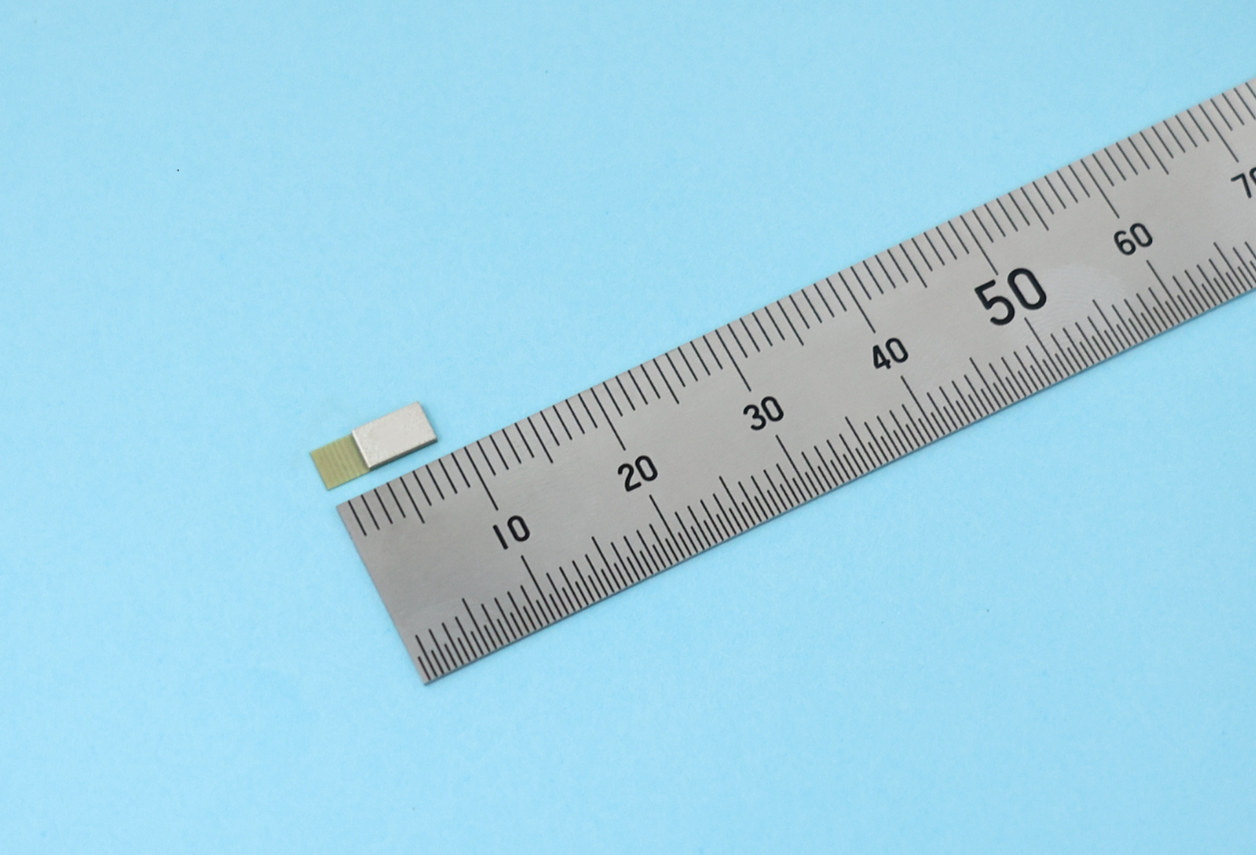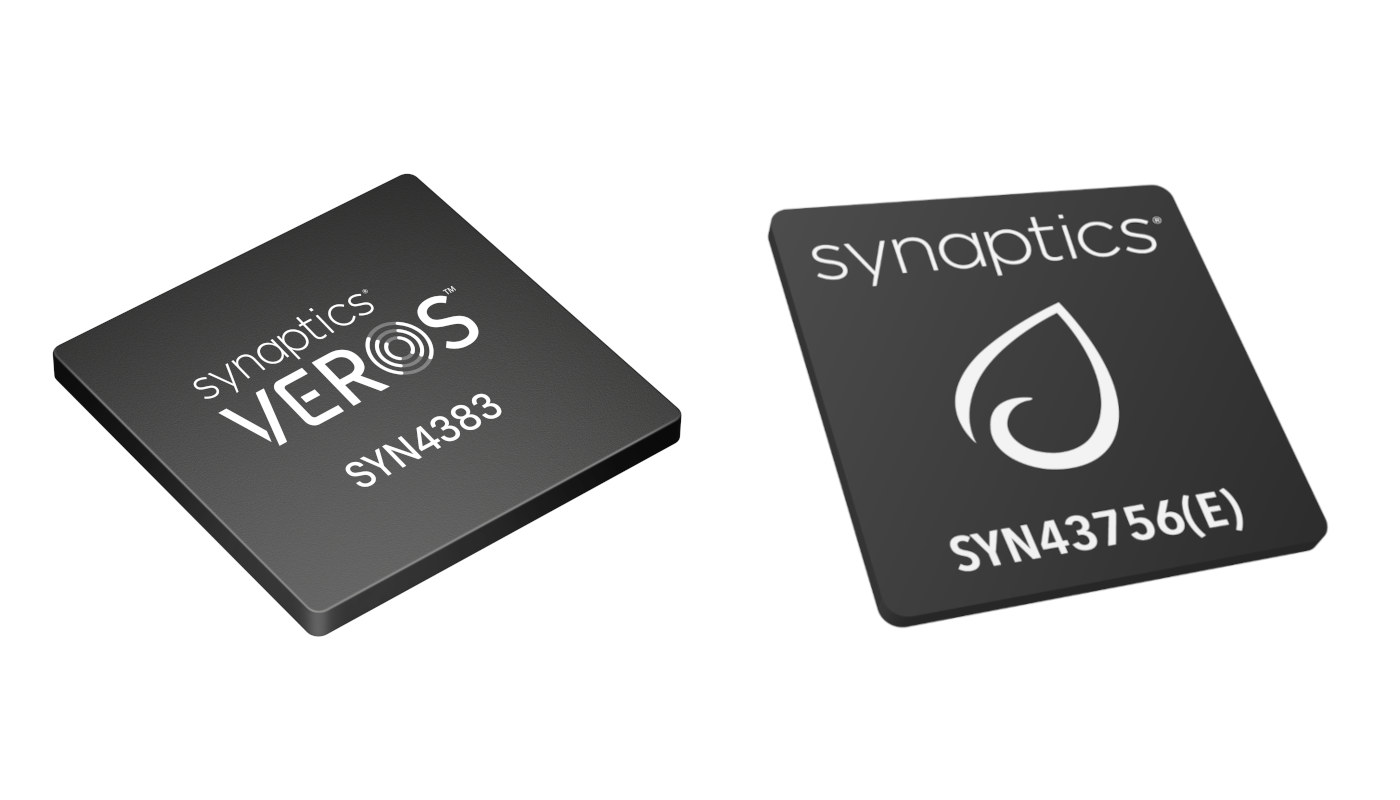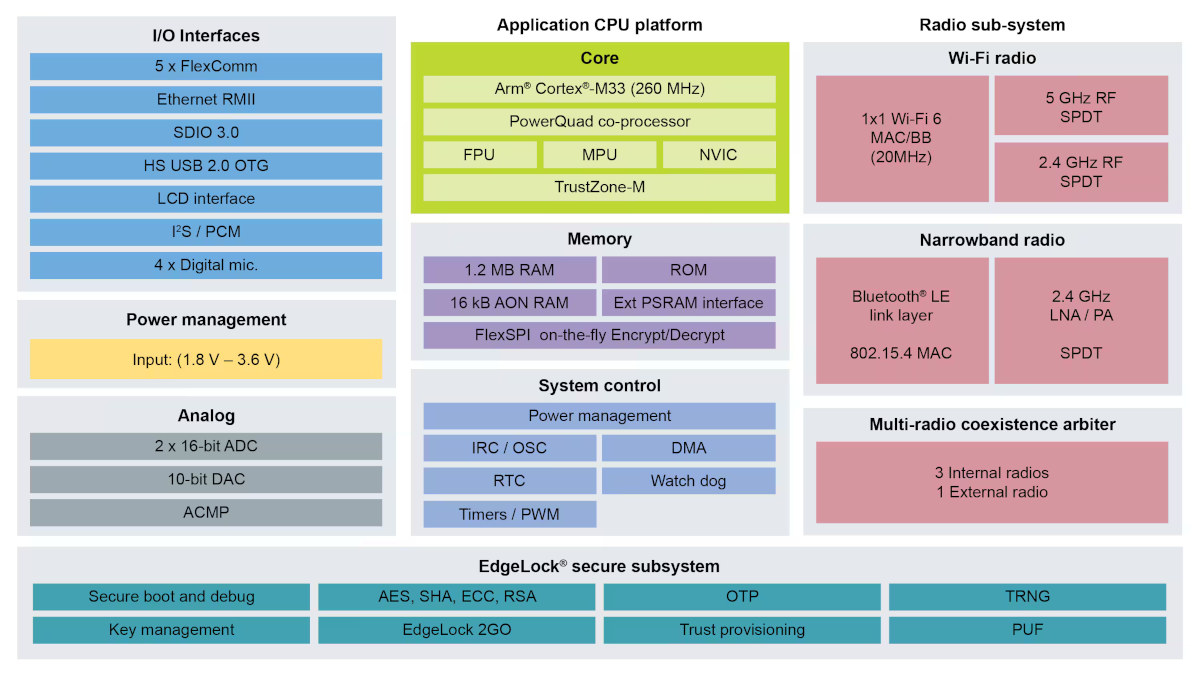Last year, we covered the u-blox MAYA-W3 module, which was based on the Infineon AIROC CYW5551x chipset and utilized separate chipsets for 2.4 GHz, 5 GHz, and 6 GHz frequencies. Now, u-blox has introduced the MAYA-W4 series, a host-based Wi-Fi 6, Bluetooth 5.4, and 802.15.4 module built on the NXP IW610 chipset. Designed for industrial and commercial applications such as building automation, energy management, smart homes, and healthcare, the MAYA-W4 series supports SISO Wi-Fi 6 with a 20 MHz channel width, ensuring reliable performance in dense network environments. These modules can function as access points, stations, P2P devices, or in mixed modes. The MAYA-W4 modules are compatible with the Matter protocol over Thread and Wi-Fi, facilitating seamless integration across ecosystems. With a compact size of 10.4 x 14.3 mm, these modules rank among the smallest Wi-Fi 6 SMD modules and are available with integrated antennas or U.FL connectors. Rigorous testing […]
nRF54L15 DK: A Development Kit for nRF54L15, nRF54L10, and nRF54L05 SoCs with Bluetooth, Thread, and Zigbee
The nRF54L15 DK is a development kit designed to evaluate the wireless SoCs of the nRF54L15, nRF54L10, and nRF54L05 wireless SoCs. These SoCs support multiple wireless protocols, including Bluetooth Low Energy, Bluetooth Mesh, Matter, Thread, Zigbee, and 2.4GHz proprietary protocols, with data rates of up to 4Mbps. The kit integrates the nRF54L15 SoC and provides emulation capabilities for the nRF54L10 and nRF54L05, enabling flexible testing and development across the nRF54L Series. The nRF54L series SoCs differ in memory configurations to meet various application requirements. The nRF54L15 includes 1.5 MB of non-volatile memory (NVM) and 256 KB of RAM for high-performance applications. The nRF54L10 features 1.0 MB of NVM and 192 KB of RAM for mid-range use cases, while the nRF54L05 offers 0.5 MB of NVM and 96 KB of RAM for entry-level designs requiring fewer resources. The kit is supported by the nRF Connect SDK and tools, providing access to […]
Qualcomm QCC730M dual-band WiFi 4 and QCC74xM WiFi 6, BLE 5.3, and 802.15.4 modules target low-power and IoT edge devices
Qualcomm has added two new IoT modules to its wireless connectivity product series: the Qualcomm QCC730M ‘micro-power’ WiFi 4 module and the QCC74xM tri-radio module, with both modules designed for smart homes, smart appliances, medical devices, and industrial applications. The Qualcomm QCC730M is a dual-band, micro-power Wi-Fi 4 module with a 60MHz Arm Cortex-M4F MCU, 640kB SRAM, 1.5MB RRAM, hardware crypto accelerator, and secure boot, debug, and storage. Its low-power design is ideal for portable, battery-powered IoT devices like IP cameras, sensors, and smart locks. Based on the Qualcomm QCC730 module, it features a 36-pin LGA package with a PCB antenna or RF connector and supports up to 4MB of optional NOR flash. The Qualcomm QCC74xM is Qualcomm’s “first programmable connectivity module,” integrating a 32-bit RISC-V module, optional stacked memory (PSRAM and NOR flash), and a tri-radio chipset for WiFi 6, Bluetooth 5.3, and IEEE 802.15.4 (Thread and Zigbee). Its […]
Conexio Stratus Pro nRF9151 low-power IoT development kit supports LTE-M/NB-IoT, DECT NR+, GPS, and more
Conexio Stratus Pro nRF9151 is an IoT development kit based on Nordic Semi nRF9151 system-in-package (SiP) with LTE-M/NB-IoT, DECT NR+, and GNSS connectivity designed for battery-powered cellular-connected products such as asset trackers, environmental monitors, smart meters, and industrial automation devices. It’s offered with the “Stratus Pro Expansion Dock” allowing users to add WiFi 6 through an nRF7002 expansion board and various other modules via Grove, Qwiic, MikroBus, and Seeed Studio’s XIAO connectors or sockets. It’s an update to the original Conexio Stratus Pro based on nRF9161 introduced last June with a very similar feature set. Let’s have a deeper look to find out any potential differences between the two versions of the devkit. Conexio Stratus Pro nRF9151 specifications (with changes highlighted in bold or strikethrough): System-in-package – Nordic Semi nRF9151 SiP MCU – Arm Cortex-M33 clocked at 64 MHz with 1 MB Flash pre-programmed MCUBoot bootloader, 256 KB RAM Modem […]
Seeed Studio’s XIAO MG24 and XIAO MG24 Sense boards target battery-powered Matter and BLE applications
Seeed Studio has added two members to its XIAO family of tiny MCU boards with the XIAO MG24 and XIAO MG24 Sense boards based on Silicon Labs EFR32MG24 multi-protocol wireless SoC and designed for battery-powered Matter over Thread and Bluetooth LE 5.3 applications. Both 21×17.8 mm USB-C boards feature a 78MHz Silabs MG24 Cortex-M33 microcontroller with 256kB SRAM and 1536KB flash, an additional 4MB SPI flash on-board, and 22 pins and pads for GPIO pins, analog inputs, and power signals, plus a reset button and two LEDs. The “Sense” model adds an analog microphone and a 6-axis IMU sensor. XIAO MG24/MG24 Sense specifications: SoC – Silicon Labs EFR32MG24 (EFR32MG24B220F1536IM48-B) MCU cores Arm Cortex-M33 @ 78.0 MHz with DSP instruction and floating-point unit for user application Arm Cortex-M0+ core for wireless Memory – 256 KB RAM Storage – 1536 KB flash Wireless protocols – Matter, OpenThread, Zigbee, Bluetooth Low Energy 5.3, […]
KAGA FEI ES4L15BA1 is an ultra-small Bluetooth LE 6.0 and 802.15.4 module based on Nordic nRF54L15 SoC
Japanese company KAGA FEI has recently unveiled the incredibly small ES5L15BA1 Bluetooth LE 6.0 and 802.15.4 module based on Nordic Semi nRF54L15 ultra-low-power Cortex-M33 wireless MCU. We had previously covered the u-Blox NORA-B2 which I already found pretty small at 14.3 x 10.4 x 1.9mm, but the ES5L15BA1 module goes a step further measuring just 8.55 x 3.25 x 1.00 mm with an integrated antenna which could make it the world’s smallest Bluetooth LE module. KAGA FEI ES4L15BA1 specifications: SoC – Nordic Semiconductor nRF54L15 MCU cores Arm Cortex-M33 with Arm TrustZone @ 128MHz RISC-V coprocessor for software-defined peripheral Memory – 256KB SRAM Storage – 1.5MB non-volatile memory Wireless Bluetooth 6.0 Data rates – 2Mbps, 1Mbps, 500kbps, 125kbps Features AoA / AoD Channel Sounding 802.15.4 radio for Thread / Zigbee / Matter Nordic Proprietary 2.4 GHz protocol up to 4 Mbps Frequency – 2402 to 2480 MHz +8dBm output power Antenna […]
Synaptics Veros SYN4383 and SYN43756(E) SoCs support tri-band WiFi 6E, Bluetooth 5.3/5.4, and 802.15.4 connectivity
Synaptic has unveiled the SYN4383 and SYN43756(E) high-performance “Veros” SoCs with tri-band Wi-Fi 6E, Bluetooth 5.3/5.4, and an optional 802.15.4 radio. The SYN4383 is an upgrade to SYN4382 SoC that supports 1,200 Mbps 2×2 MIMO Wi-Fi 6E, Bluetooth 5.4, and 802.15.4 for Zigbee and Thread support. It supports real simultaneous dual-band (RSDB) operation and offers “greater system integration”. The SYN43756(E) is similar but lacks an 802.15.4 radio and RSDB support. SYN4383 “Triple Combo 3” Wi-Fi 6E, Bluetooth 5.4, 802.15.4 SoC Synaptics Veros SYN4383 key features: Tri-band 2×2 MIMO Wi-Fi 6E (802.11ax) up to 1200 Mbps throughput, RSDB with 2.4 GHz radio and either 5 or 6 GHz radio, and support for legacy 802.11a/b/g/n/ac WiFi Bluetooth 5.4 (Bluetooth 6.0 compatible) with LE Audio, Channel Sounding for accurate positioning 802.15.4 radio for Thread and Zigbee Application-layer support for Matter-compliant security and interoperability Smart Co-Ex for WiFi/Bluetooth coexistence in the 2.4 GHz band […]
NXP RW612 Arm Cortex-M33 Wireless MCU offers Wi-Fi 6, Bluetooth 5.4, and 802.15.4 radios
The NXP RW612 is an Arm Cortex-M33 SoC with three radios, namely WiFi 6, Bluetooth 5.4, and 802.15.4 for Thread and Matter connectivity. It also has a small sibling called the RW610 without the 802.15.4 radio. I first came across RW61x chips, when Debashis wrote about the Trimension SR250 UWB chip mentioning it can work with “host processors like NXP’s i.MX, RW61x, and MCX families”. I initially thought it was a typo for the iW612 tri-radio solution introduced in 2022, and the RW612 is indeed similar, but it’s a complete wireless microcontroller/SoC with an Arm Cortex-M33 application core so it can be used independently as a host instead of a companion chip. NXP RW612 and RW610 specifications: MCU sub-system Core – 260 MHz Arm Cortex-M33 with TrustZone-M Memory On-chip 1.2 MB SRAM PSRAM interface for memory expansion Storage – Quad FlexSPI Flash XIP with on-the-fly decryption Peripheral interfaces Up to […]


